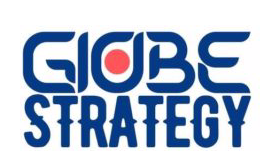This is another big challenge for international economics after Leontief paradox. This paper demonstrates that there are three trade types in international trade: the Heckscher-Ohlin trade, the Leontief trade, and the conversion trade, by using the 2 × 2 × 2 Trefler model. The conversion trade occurs when the model structure is with FIRs. The conversion trade is one that one country exports the commodity that uses its scarce factor intensively; another country exports the commodity that uses its abundant factor intensively. The conversion trade actually is the trade with factor content reversal2, i.e. that if one country exports the services of capital and imports the services of labor, another country does the same. This study demonstrates that both the Leontief trade and the conversion trade are rooted in the Heckscher-Ohlin theories. The three trade types are under the generalized trade pattern that each country exports the commodity that uses its effective (virtual) 3 abundant factor intensively and imports the commodity that uses its effective (virtual) scarce factor intensively <<ClickHere>>>
Tag: importing
Starting to import into the UK
UK government regulations if you are importing or exporting electronic goods, including licensing, certification, safety and environmental requirements.
Importing and Exporting
Importing (buying products overseas and reselling them in one’s own country) and exporting (selling domestic products to foreign customers) are the oldest and most prevalent forms of international trade. For many companies, importing is the primary link to the global market. American food and beverage wholesalers, for instance, import the bottled water Evian from its source in the French Alps for resale in U.S. supermarkets.Fine Waters Media, “Bottled Water of France,” http://www.finewaters.com/Bottled_Water/France/Evian.asp (accessed May 25, 2006). Other companies get into the global arena by identifying an international market for their products and become exporters. The Chinese, for instance, are increasingly fond of fast foods cooked in soybean oil. Because they also have an increasing appetite for meat, they need high-protein soybeans to raise livestock.H. Frederick Gale, “China’s Growing Affluence: How Food Markets Are Responding” (U.S. Department of Agriculture, June 2003), http://www.ers.usda.gov/Amberwaves/June03/Features/ChinasGrowingAffluence.htm (accessed May 25, 2006). As a result, American farmers now export over $1 billion worth of soybeans to China every year.
Source:
“Business in a Global Environment”, chapter 3 from the book An Introduction to Business (v. 1.0), curated by Andy Schmitz on http://2012books.lardbucket.org/books/an-introduction-to-business-v1.0/s07-business-in-a-global-environme.html
